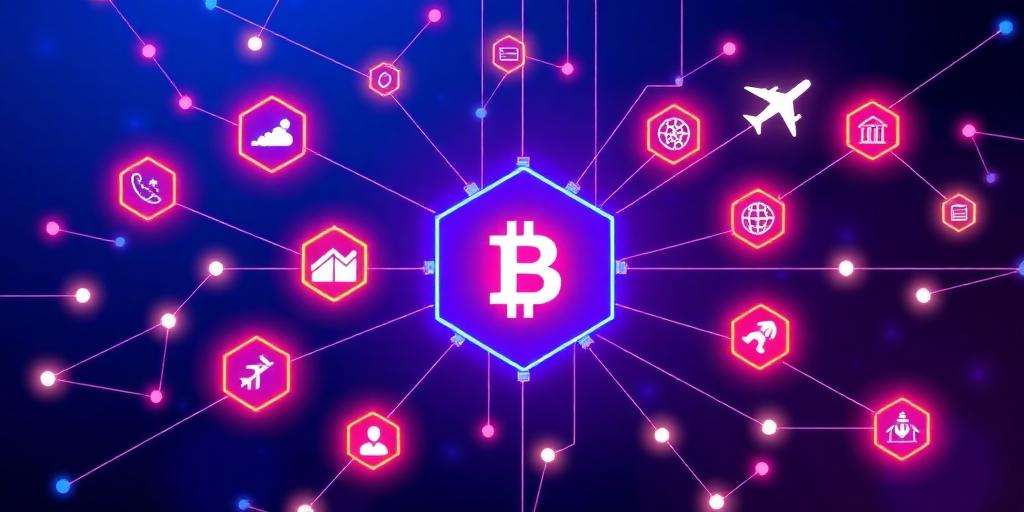The inherent power of blockchain technology lies in its immutability and decentralized nature, offering a secure and transparent ledger for transactions and programmable smart contracts. However, a fundamental challenge known as the "oracle problem" restricts this potential: blockchains are intentionally isolated systems, unable to natively access real-world data outside their network. This critical limitation means that smart contracts, while powerful, cannot autonomously react to external events like market prices, weather conditions, or shipping updates.
Bridging the On-Chain and Off-Chain Divide
Enter the indispensable role of oracles. In the context of blockchain, an oracle is a third-party service that provides external information to smart contracts, effectively bridging the gap between the on-chain and off-chain worlds. Oracles are not the data source themselves but rather the secure conduit, retrieving, verifying, and delivering external data to the blockchain. Without them, most real-world applications of smart contracts, from decentralized finance (DeFi) to supply chain management, would be largely infeasible.
How Blockchain Oracles Function
The operational mechanism of an oracle involves several key steps. First, the smart contract requests specific off-chain data. The oracle then queries the requested data from various external sources, which could include web APIs, traditional databases, IoT sensors, or even human input. Crucially, before transmitting this data to the blockchain, a robust oracle system typically employs mechanisms to verify its accuracy and authenticity, mitigating the risk of malicious or erroneous information. Finally, the verified data is delivered to the smart contract, allowing it to execute its programmed logic based on real-world conditions.
Categorizing Oracle Systems
Oracles manifest in various forms, each suited for different use cases and security considerations:
- Software Oracles: These retrieve information from online sources such as web APIs, company databases, or server data. Examples include fetching current stock prices for a financial smart contract or flight status for an insurance policy.
- Hardware Oracles: These interact with the physical world, collecting data from sensors, barcode scanners, or RFID tags. They are crucial for supply chain tracking, IoT applications, and physical asset management.
- Inbound Oracles: These bring information from the external world onto the blockchain, enabling smart contracts to react to off-chain events.
- Outbound Oracles: Less common but equally vital, these allow smart contracts to trigger real-world actions, such as initiating a payment through a traditional banking system or controlling a device.
- Human Oracles: In some niche cases, trusted individuals can serve as oracles, manually inputting data or verifying events, often within a multi-signature or dispute resolution framework.
Perhaps the most significant distinction lies between Centralized Oracles and Decentralized Oracle Networks (DONs). A centralized oracle, by its nature, introduces a single point of failure and a trust dependency, undermining the core tenets of blockchain decentralization. Conversely, DONs, exemplified by protocols like Chainlink, leverage a network of independent oracle nodes to source, aggregate, and validate data, significantly enhancing security, reliability, and censorship resistance. This collective validation ensures data integrity and reduces the risk of manipulation.
Navigating Challenges: Security and Data Integrity
The integrity of the data provided by an oracle is paramount; compromised data can lead to erroneous smart contract executions and significant financial losses. Key challenges include ensuring data accuracy, preventing data manipulation, and maintaining decentralization to avoid single points of failure. Solutions implemented by leading decentralized oracles include:
- Cryptographic Proofs: Using advanced cryptography to verify the authenticity of data sources.
- Reputation Systems: Nodes earn or lose reputation based on the accuracy and timeliness of the data they provide.
- Multiple Data Sources: Aggregating data from numerous independent sources to eliminate single points of compromise.
- Economic Incentives/Disincentives: Staking mechanisms and penalties to encourage honest behavior among oracle nodes.
- Trusted Execution Environments (TEEs): Hardware-based solutions that create a secure, isolated environment for data processing.
The Future: Hybrid Smart Contracts and Expanding Use Cases
The ongoing evolution of blockchain oracles is enabling a new paradigm of "hybrid smart contracts"—applications that combine on-chain logic with off-chain data and computation. This fusion unlocks an extensive array of sophisticated use cases, transforming industries from finance and insurance to gaming and supply chain logistics. For instance, in DeFi, oracles provide critical price feeds for lending protocols and derivatives. In insurance, they can automate payouts based on verified events like flight delays or crop yield data. As the blockchain ecosystem matures, the demand for robust, secure, and decentralized oracle solutions will only intensify, driving further innovation in data aggregation, verification, and delivery mechanisms.
In conclusion, while the core blockchain provides unparalleled security and transparency for on-chain operations, it is the sophisticated architecture of oracles that truly connects it to the complexities of the real world. These vital bridges enable smart contracts to fulfill their immense potential, moving beyond isolated digital ledgers to become reactive, intelligent agents capable of executing agreements based on verifiable, real-world events. The future of decentralized applications is inextricably linked to the continued advancement and widespread adoption of reliable smart contract data feeds provided by robust decentralized oracle networks.









